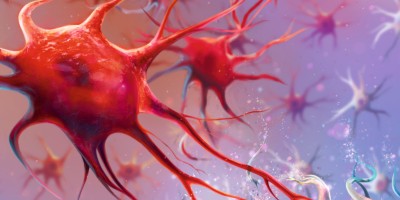Debates on patenting DNA must evolve to reflect the global decline in filings and regional disparities in patenting activity.


References
Heller M.A. & Eisenberg R.S. Science 280, 698–701 (1998).
Matthijs, G. BMJ 329, 1358–1360 (2004).
Nuffield Council on Bioethics. The ethics of patenting DNA: a discussion paper (Nuffield Council, London, 2002). <http://www.nuffieldbioethics.org/publications/pp_0000000014.asp>
Merz J.F. et al. Nature 415, 577–579 (2002).
National Academy of Sciences. Reaping the benefits of genomic and proteomic research: intellectual property rights, innovation and public health (National Academies Press, Washington, DC, 2005) <http://www.nap.edu/catalog/11487.html>
Hansen, S. et al. Intellectual property in the AAAS scientific community (AAAS, Washington, DC, 2005).
Stern, S. & Murray, F.E. Do formal intellectual property rights hinder the free flow of scientific knowledge? An empirical test of the anti-commons hypothesis. National Bureau of Economic Research Working Paper No. W11465 (July 2005). <http://ssrn.com/abstract=755701>
Walsh J.P. et al. in Patents in the knowledge-based economy (eds. Cohen W.N. & Merrill S.) pp. 285–340 (National Academy Press, Washington, DC, 2003).
Thomas S.M. et al. Nat. Biotechnol. 20, 1185–1188 (2002).
Biotechnology Innovation Report 2004: Benchmarks (Finnegan, Henderson Farabow Garret and Dunner, Washington, DC, 2004).
Jensen, K. & Murray, F. Science 310, 239–240 (2005).
Pressman, L. et al. Nat. Biotechnol. 24, 31–39 (2006).
Trilateral Statistical Report 2004 Edition (EPO, JPO, and USPTO with cooperation of WIPO; Munich, October 2005) <http://www.trilateral.net/tsr/tsr_2004/tsr2004.pdf>
FR Doc 01-322, Federal Register 66, No. 4 (January 2001). <http://www.uspto.gov/web/offices/com/sol/notices/utilexmguide.pdf>
Cost analysis data produced by the EPO available at http://www.european-patent-office.org/epo/new/cost_analysis_2005_en.pdf
Hopkins, M.M. et al. The Patenting of Human DNA: Global Trends in Public and Private Sector Activity (A report for the European Commission, compiled by SPRU, Brighton, UK, November 2006). <http:www.sussex.ac.uk/spru/documents/patgen_finalreport.pdf>
<http://www.trilateral.net/projects/biotechnology/reach_through_claims/>
Acknowledgements
This research was funded by the European Commission's 6th Framework program. The authors are grateful for the generous time given by our interviewees; the project advisory committee, Robert Wells, Siobhán Yeats, Joseph Straus; as well as to Alma Rocha, Alex Bousios, Ryosuke Ohashi and Rachel Thornley, and Thomson Scientific for technical assistance. The conclusions drawn are those of the authors' alone.
Author information
Authors and Affiliations
Ethics declarations
Competing interests
The authors declare no competing financial interests.
Rights and permissions
About this article
Cite this article
Hopkins, M., Mahdi, S., Patel, P. et al. DNA patenting: the end of an era?. Nat Biotechnol 25, 185–187 (2007). https://doi.org/10.1038/nbt0207-185
Issue Date:
DOI: https://doi.org/10.1038/nbt0207-185
- Springer Nature America, Inc.
This article is cited by
-
Myriad's impact on gene patents
Nature Biotechnology (2016)
-
Are the gene-patent storm clouds dissipating? A global snapshot
Nature Biotechnology (2015)
-
The fate and future of patents on human genes and genetic diagnostic methods
Nature Reviews Genetics (2012)
-
Harmonizing policy on human genetic resources and benefit sharing
Nature Biotechnology (2012)
-
Impact of gene patents on diagnostic testing: a new patent landscaping method applied to spinocerebellar ataxia
European Journal of Human Genetics (2011)


